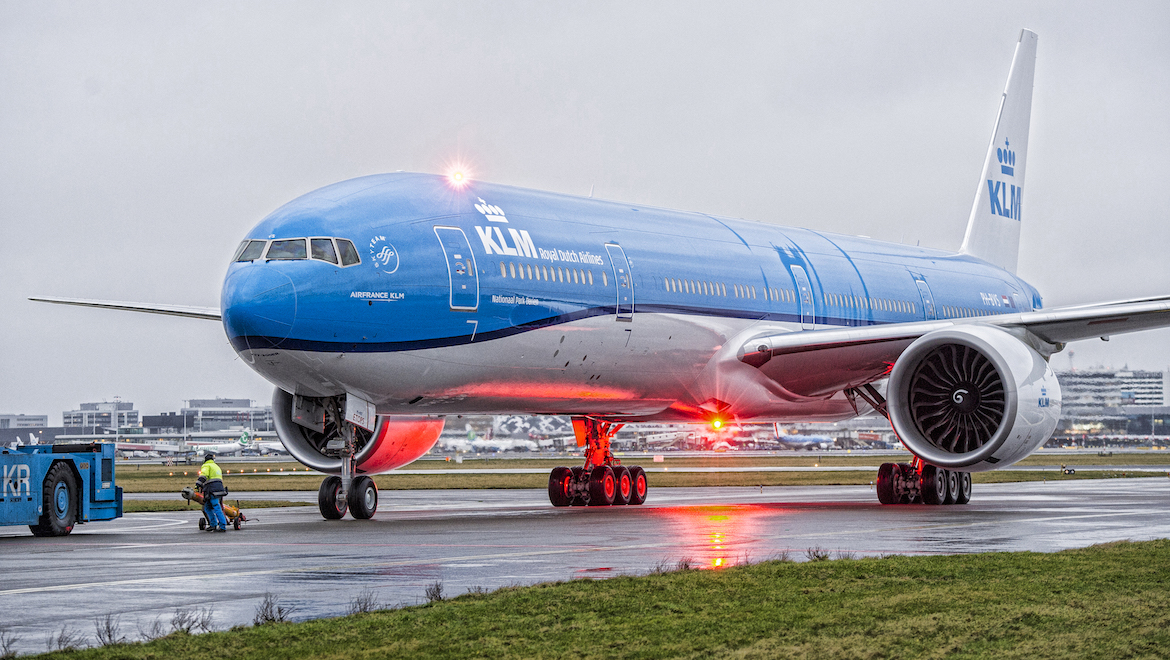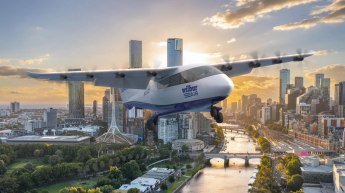
KLM Royal Dutch Airlines has made a commitment to develop and purchase 75,000 tonnes of sustainable aviation fuel a year, enough to cut emissions by the equivalent of 1,000 KLM flights on the Amsterdam to Rio route.
The commitment will support the development of Europe’s first dedicated plant for the production of sustainable aviation fuel (SAF) by SkyNRG in Delfzijl, a seaport in the north-east of the Netherlands. The plant, called DSL-01, will produce 100,000 tonnes of SAF annually from 2022.
KLM chief executive Pieter Elbers says the privileges brought by aviation came with great responsibility towards the planet, which he says KLM takes very seriously.
“This will reduce our CO2 emissions by 200,000 tonnes a year, which is equal to the emissions released by 1,000 KLM flights between Amsterdam and Rio de Janeiro,” Elbers said in a statement.
KLM will be the first airline to invest in sustainable aviation fuel on such a scale.
Maarten van Dijk, executive director of SkyNRG, said the project was an important milestone in upscaling the market for sustainable aviation fuel.
“We are the first to take a step on this scale and we hope it will serve as an example to the rest of the industry in the transition towards a sustainable future for commercial aviation,” van Dijk said.
The plant will also generate a by-product of 15,000 tonnes of bioLPG to be purchased by SHV Energy, a global LPG distribution firm, which will also be an investment partner in the facility, along with Amsterdam Airport Schiphol.
SHV Energy chief executive Bram Gräber said the take-up of bioLPG will reduce CO2 emissions by 35,000 tonnes a year and was in keeping with the firm’s strategy to increase the share of sustainably produced energy products.
“Our customers in Europe, many of whom are not connected to the natural gas grid, rely on SHV Energy to meet their energy needs efficiently, sustainably and safely,” Gräber said.
The DSL-01 facility will be powered by sustainable hydrogen produced using water and wind energy. As a result, the SAF will deliver a CO2 reduction of at least 85 per cent, compared to fossil fuel, as well as significantly less emissions of ultra-fine particles and sulphur.
Other firms involved in various phases of the SkyNRG project in addition to KLM and SHV Energy were: EIT Climate-KIC, Royal Schiphol Group, GROEIfonds, NV NOM, Groningen Seaports, Nouryon, Gasunie, Arcadis, TechnipFMC, Haldor Topsoe, Desmet Ballestra, Susteen Technologies, and MBP Solutions.
VIDEO: A look at the first dedicated commercial scale plant for sustainable aviation fuel from the SkyNRG YouTube channel.
AIRLINES HAVE SET EMISSIONS REDUCTION TARGETS
In October 2016, an overwhelming majority of the International Civil Aviation Organisation’s 191 member states agreed to the Carbon Offsetting and Reduction Scheme for International Aviation (CORSIA).
Further, 73 nations, including Australia, New Zealand and Papua New Guinea in this part of the world, have agreed to be part of CORSIA from the start.
The landmark agreement has among its targets for the industry to achieve carbon neutral growth by 2020, in addition to a 50 per cent reduction in CO2 emissions by 2050, compared with 2005 levels.
ICAO has also come up with a CO2 emissions standard, where aircraft will have to meet a maximum fuel burn per flight kilometre baseline which must not be exceeded. The standard would apply to new aircraft designs from 2020, while new deliveries of current in-production aircraft models would be subject to the CO2 standard from 2023.
Further, the ICAO measure also recommended a cut-off date of 2028 for production aircraft that did not comply with the standard.
Moreover, the International Air Transport Association (IATA) has set a target of an average improvement in fuel efficiency of 1.5 per cent per year from 2009 to 2020, as well as aspirations to build an aircraft that produced no emissions within 50 years.
Air transport accounted for about two per cent of global man-made CO2 emissions. The figure has been relatively constant over the past 20 years and was not expected to increase beyond three per cent by 2050.
IATA estimated the number of flights taken with sustainable aviation fuels since the first test flight in 2008 was likely to reach one million by 2020. Further, the association has said previously it hoped to have one billion passengers fly on some blend of sustainable aviation biofuel by 2025.
In Australia, Virgin Australia has conducted biofuel trials out of Brisbane Airport in 2018.
Meanwhile, Qantas announced in 2017 it had signed a 10-year deal to purchase 30 million litres of biofuel for its flights departing Los Angeles from 2020.
















Stewart Corfield
says:It would be great if Qantas could use Bio fuel produced in Australia as well. Even for domestic use. Surely there could be sources of bio fuel in this country.
Kim Knight
says:This sounds fantastic – the way to go – but does the use of 75,000 tonnes of SAF really reduce carbon emissions by 200,000 tonnes? I’m not sure how the Maths or the Chemistry works there. Have I misread something? If someone could enlighten me I would appreciate it.
John Roles
says:Kim
Avoation fuel is about 85 to 90% carbon. CO2 is 12/44 or about 27% carbon. Combined together the ratio between fuel and Resultin CO2 emissions is about 3 to 1.
Adrian P
says:When carbon and hydrogen is burnt (Combines with oxygen which is heavy) the resultant mass is greater due to the merging of carbon, hydrogen and oxygen into water and carbon dioxide. Also they also probably included the savings from using hydrogen to power the refining process. Reduction of methane from utilisng waste vegetation. The carbon dioxide absorbed by the plant material during growth. When we burn coal and oil we are releasing the carbon sequestrated by plants millions of years ago causing an increase in carbon dioxide with a corresponding reduction oxygen.
The bit useful to regional Australia is if we pumped hydrogen to Broken Hill instead of water Broken Hill would have a power supply and water.
Kim Knight
says:Very interesting. Thanks John and Adrian for the enlightening info.